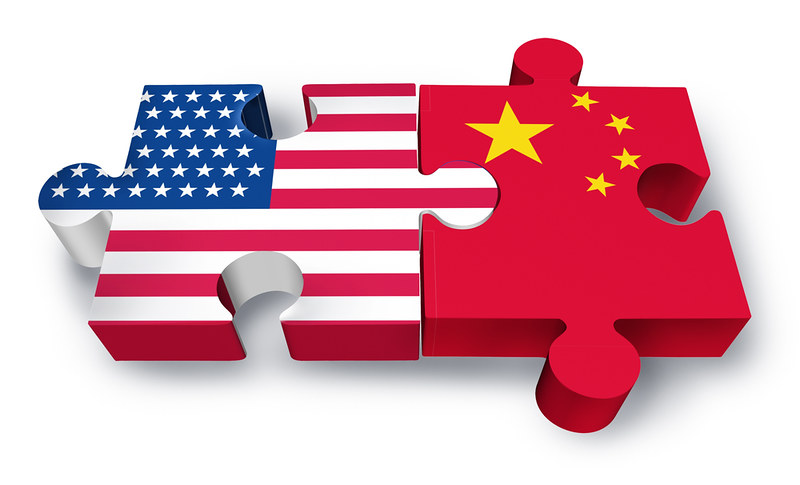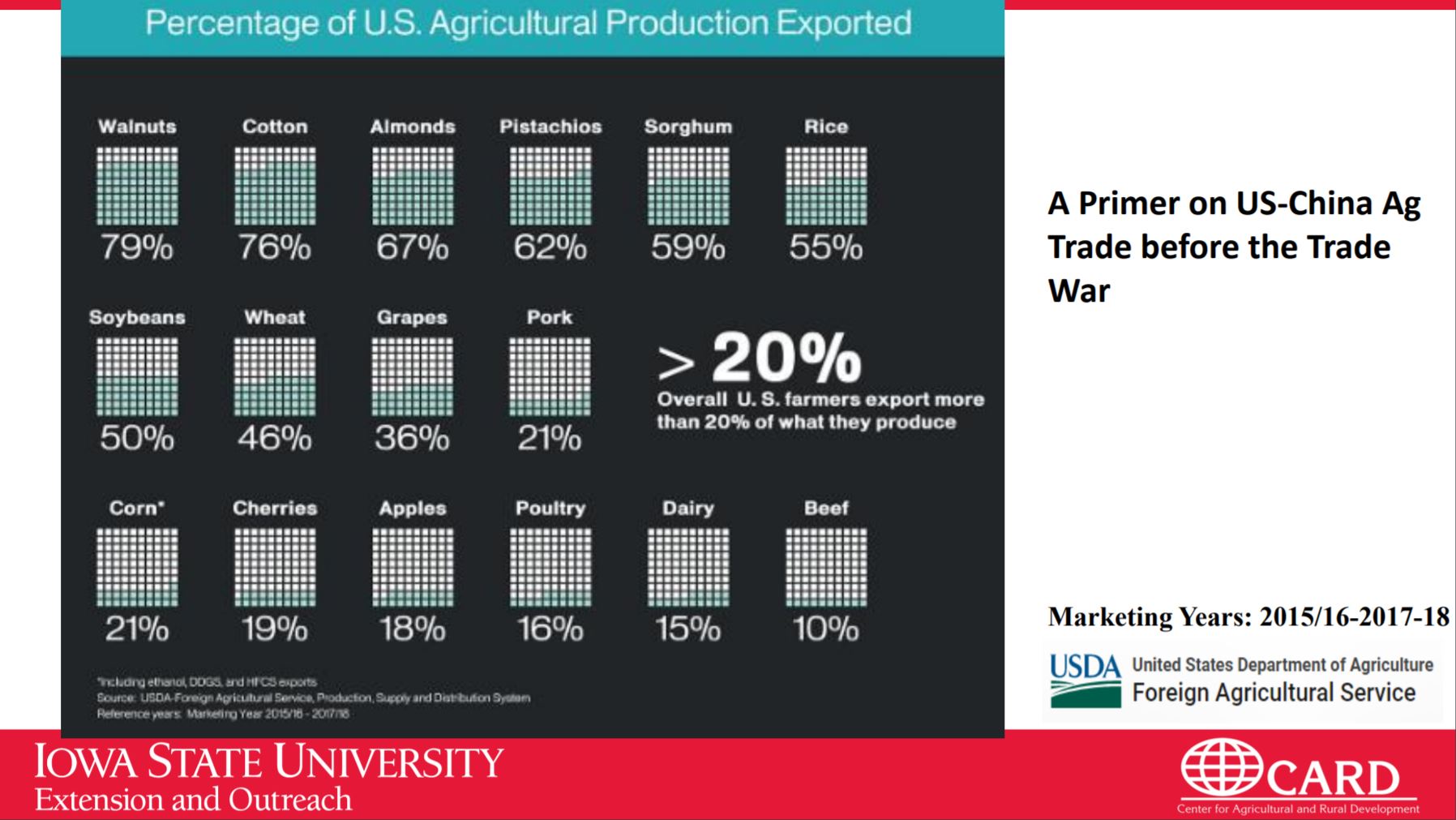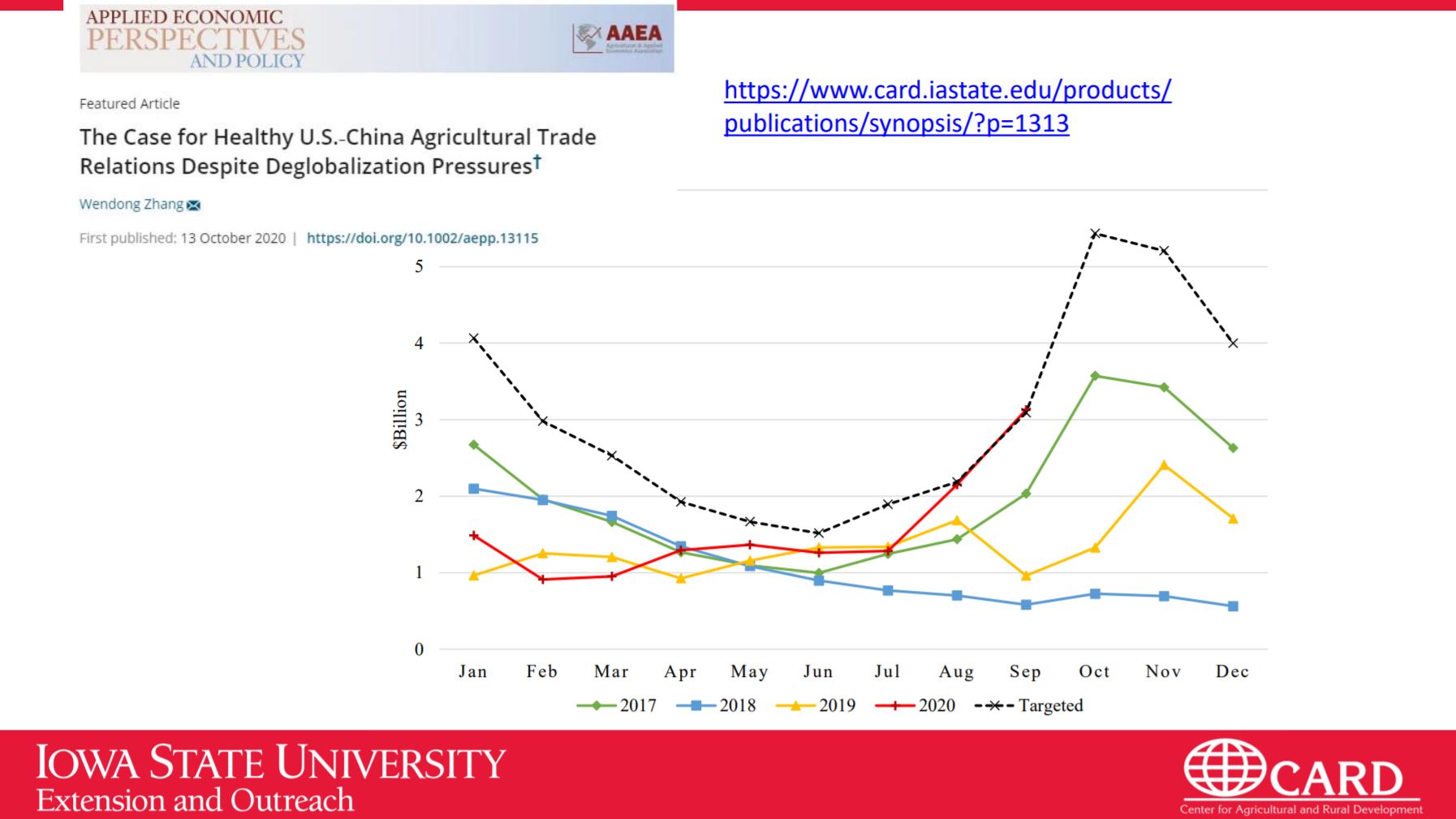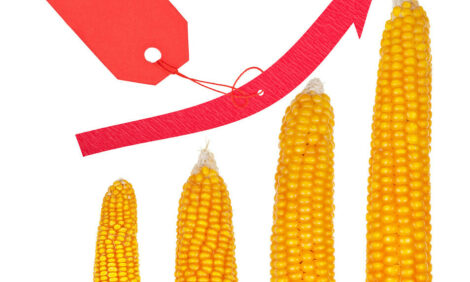



U.S.-China trade relationship remains indispensable on global stage
Despite having hardships, the trade relationship between the United States and China is indispensable, and one of the most influential on the global stage.

Dr. Wendong Zhang, an Ohio State graduate and current assistant professor at Iowa State University, discussed the current situation between the two countries as part of the 2020 Agricultural Policy and Outlook Conference hosted by The Ohio State University College of Food, Agriculture and Environmental Science.
Agricultural trade in the US is unique. It remains an area with a surplus, whereas the nation’s general global trade is yielding a deficit. Part of what makes the US unique as an exporter compared to competitors is that agricultural trade is influenced by many other issues which impact bilateral political relations.
Zhang notes that while there is a deterioration in these relations from certain parts of Asia, there are signs that both nations are working hard to keep the trade deal alive.


Phase One Deal
It was just in 2018 when the trade war first broke out, and now the Phase One deal and communication between the US Trade Representation with the Chinese administration remains arguably the only functioning high-level talk channels between the two nations. Both are making efforts to ensure the trade deal continues, with China making notable progress in recent months to meet targets.
Certain US agricultural products are heavily reliant on global trade, including nuts, soybeans and feed grains. China is a critical force in the rising global demand for these commodities.

© Wendong Zhang

© Wendong Zhang
Prior to the trade war, China purchased 60% of the US’s soybean exports. Zhang noted a recent US Trade Representative (USTR) report arguing that China had already completed 71% of its yearly soybean target, meaning China has already pledged to buy $12.5 billion more than the 2017 pre-trade war baseline.
It is important to be aware that USTR calculates advanced sales and commitments, not just actual purchases and commitments in the Phase One deal. It also includes unconventional products like beer, wine and infant formula. Zhang says these are positive signals both countries are trying to make this work.
The pandemic did put an unexpected temporary dip on progress due to the shutdown and weakened economy that inhibited China’s ability to buy from the US.

© Wendong Zhang

© Wendong Zhang
“As China gradually contained the pandemic and the momentum has been gaining significantly, especially in recent years, blowing all their record levels for previous purchases compared to previous years and meeting or exceeding the expectations for the Phase One deal target,” said Zhang.
The current forecast is for China to buy $31 billion early next year. Growth is coming from record purchases of other products like corn, pork and beef as opposed to just soybeans.
Zhang pointed out that while China is pushing the Phase One deal forward, even if the target is lower than hoped, it will still be the largest ever compared to previous Chinese sales. The opportunity for growth in other markets could be a big asset for the US to diversify its trade portfolio.
China-U.S. relationship significance
The trends and growth of the Chinese economy and population are important to consider regarding the future of global trade.
“I think commodity agriculture has a comparative advantage for the U.S. but not China,” said Zhang.

© Wendong Zhang

© Wendong Zhang
He explained that looking at a map, it is easy to assume China has similar land to US for food production. However, he pointed out 90% of the Chinese population (1.4 billion people) live where crops and livestock are being produced.
“China only has 7% to 9% of the arable land and 20% of the population, while the US has 4% of the population and 15% of the arable land,” he said. “That alone is why China needs to buy a whole lot more, especially when it comes to land-intensive feed grains and proteins.”
China represents probably one-third of the future billion middle class and has huge income growth potentials, he explained.
Currently, there are 600 million Chinese earning less than $140 in disposable income per person. Ultimately, China is still a large, thriving developing country and as people get richer, there will be more demand for proteins, fresh vegetables and specialty products, like avocado, chili and cherries.
Moving ahead, Zhang believes the most likely case will be a renegotiation of the Phase One deal.
“Even if President Trump got re-elected, we might see a renegotiating for the Phase Two, which will make the Phase One agreement void as well,” Zhang said. “The difference is that we probably will see more reestablishment of the formal channels with China's on national security and economic dialogue. One of the uncertainties is whether and how quickly the US will rejoin TPP."
China imports one-fourth of their pork from the US, about one-third of their soybeans, but only one-80th of their beef from the US. Could the US import portfolio continue to grow for protein?
"One thing to understand is that for soybeans, China can only produce 15%, so China will be relying on the global market. For wheat and rice, these are regarded as essential food crops, so China won't be open to the global market," said Zhang. "For beef, there is a rising per capita consumption, but China is buying from Australia. For pork, they are buying a whole lot more from the US, but the lion's share is still coming from Europe. There is a golden opportunity now because Germany has African swine fever, so there's a short window that we can really ramp up the capacity. But when you are thinking about a lot of the demand, especially for beef, if the Chinese people view the grass-fed beef from Australia as a higher quality products, then that could affect the long-term prospect of the US beef exports."









